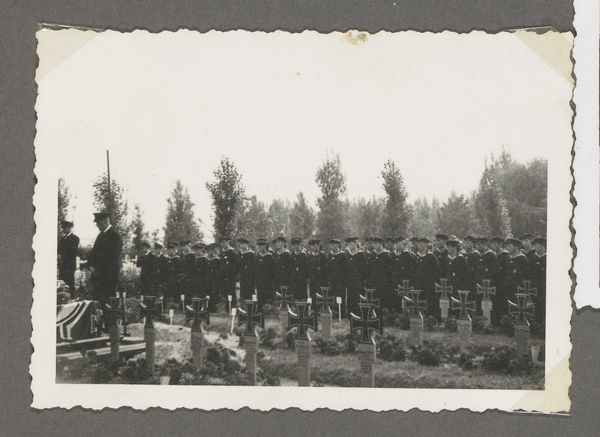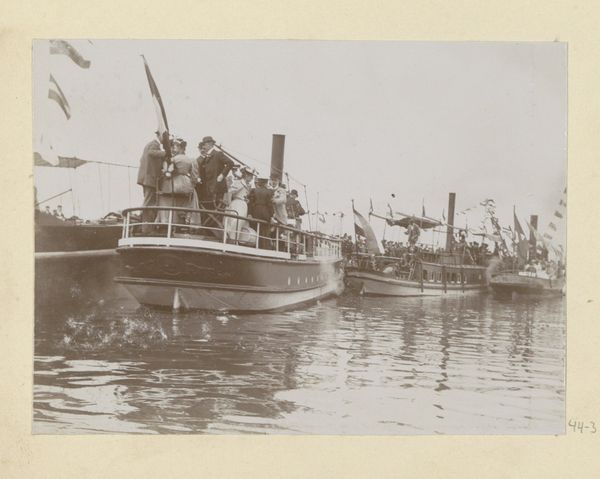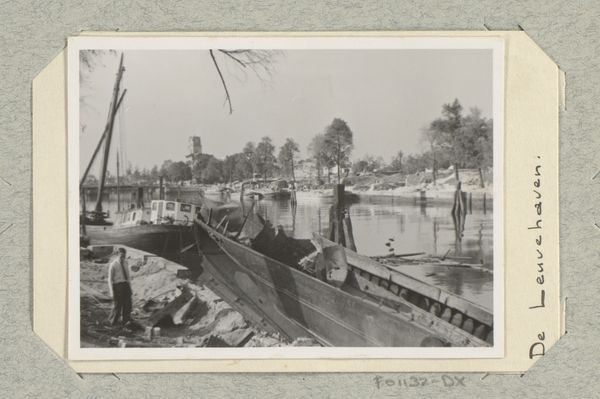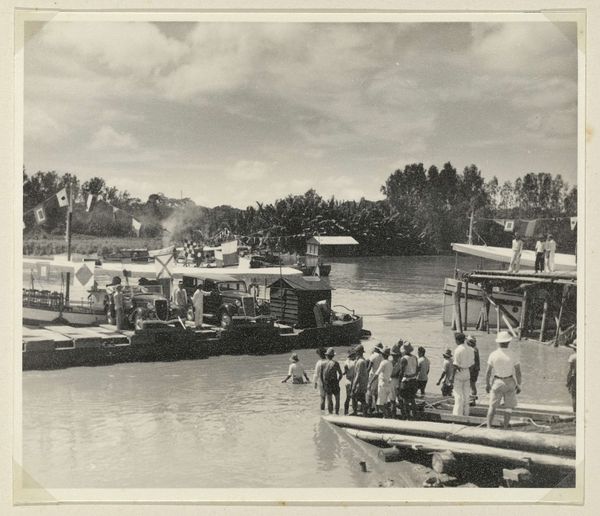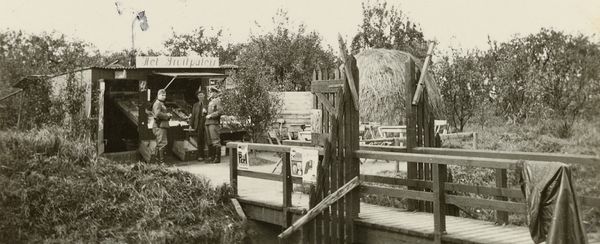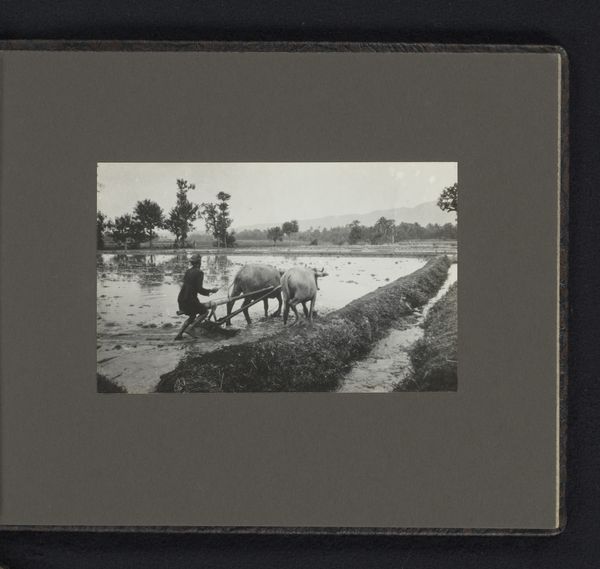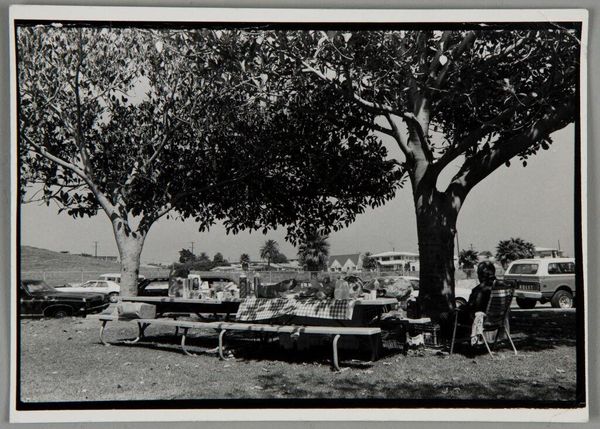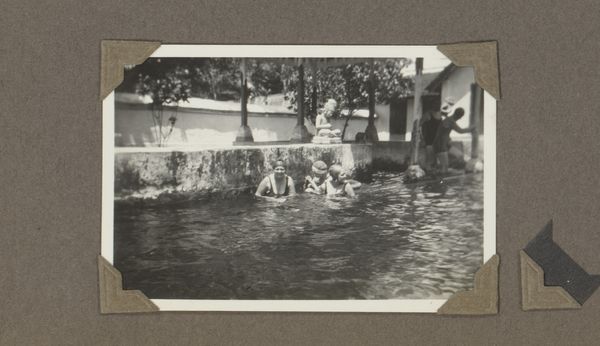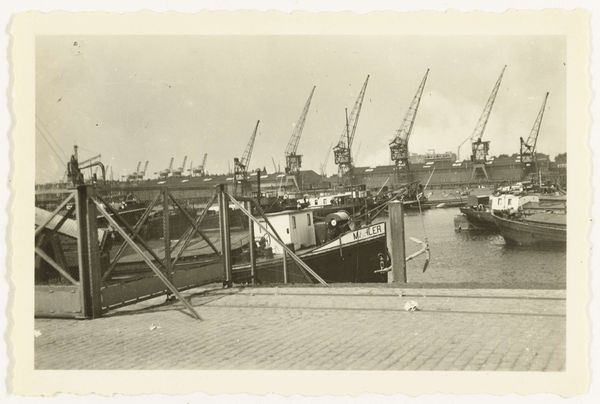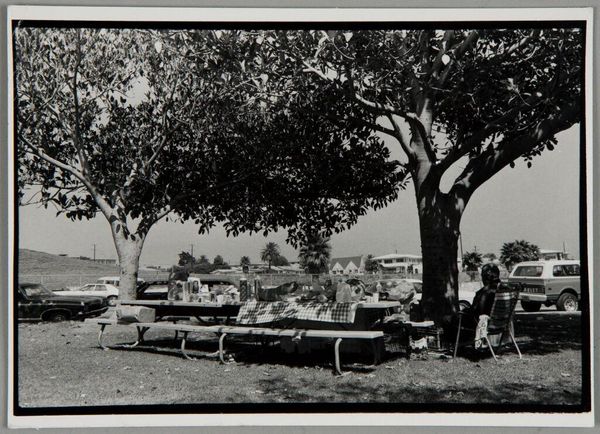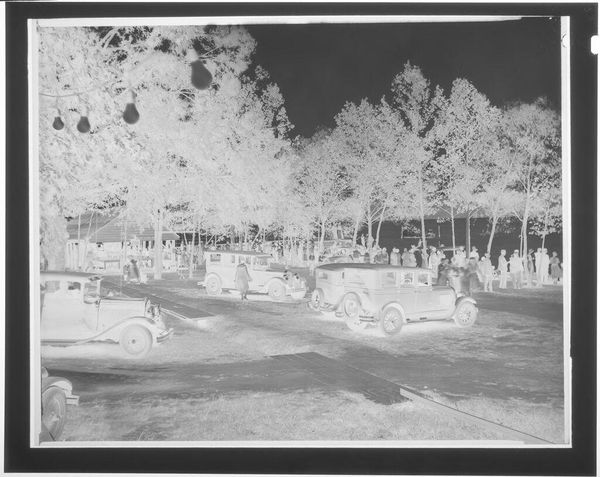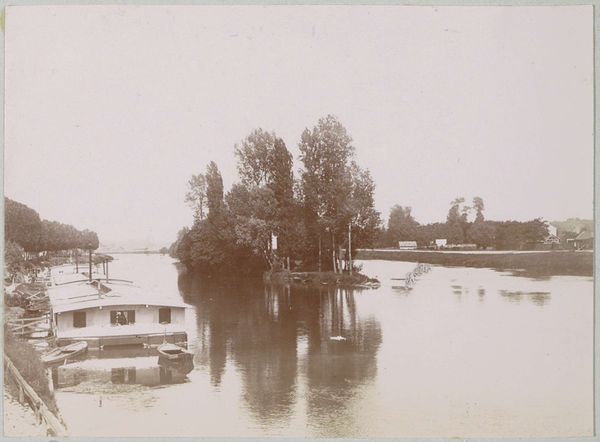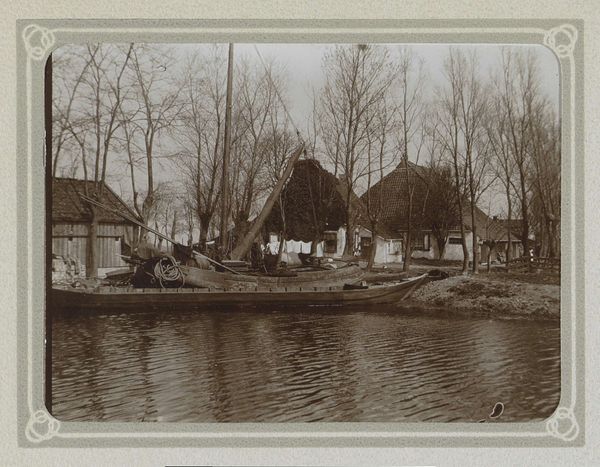
photography, gelatin-silver-print
#
portrait
#
medieval
#
landscape
#
photography
#
gelatin-silver-print
#
history-painting
#
realism
Dimensions: height 62 mm, width 87 mm
Copyright: Rijks Museum: Open Domain
Curator: Standing before us is an arresting gelatin silver print, a photograph titled "Begrafenis van drie gevallen soldaten"—"Burial of Three Fallen Soldiers." Its origins trace back to the period between 1941 and 1945, and it resides here at the Rijksmuseum. Editor: Immediately, I'm struck by its starkness. It's more than just documentation; the arrangement, the light, it has this chilling, deliberate quality that resonates with somber reverence. I notice the dark wood, stark contrasts... very bleak but also composed. Curator: Indeed, the composition speaks volumes about the historical context. Consider how public mourning rituals, especially during wartime, served a critical socio-political function, unifying communities while also visually reinforcing narratives of sacrifice and national identity. Editor: Right, the soldiers present almost like statues, observing and bearing witness. And the wreaths! Such heavy blooms contrasted with those dark boxes…It’s visually laying grief bare. But it all feels a bit stage-managed. Controlled. Curator: The presence of military personnel suggests an officially sanctioned event, typical of many state funerals of the era, where careful control of imagery and narrative served specific propaganda aims, boosting morale while reinforcing ideological frameworks. The scale is also notable; the use of a photographic medium suggests it was made for circulation and posterity, ensuring its message reached a broader audience than any one burial site. Editor: That almost…clinical photographic style really drives the feeling of a moment meant to be captured, controlled. What do you think its intended audience might have taken away from seeing this then? Besides just grieving? Curator: I would guess that the government would likely see them as displays of sacrifice in the name of freedom and resistance. But more immediately, it can't be denied that these photos carry such deeply intimate sentiments. Editor: You’re right. All I keep imagining is whoever held this photo decades ago, processing so much sadness, feeling perhaps some echo of pride or defiance. It makes it… incredibly poignant, really. Curator: Absolutely. It transcends mere documentation; it is both a symbol and a personal echo across time. A potent mix, I’d say.
Comments
No comments
Be the first to comment and join the conversation on the ultimate creative platform.
